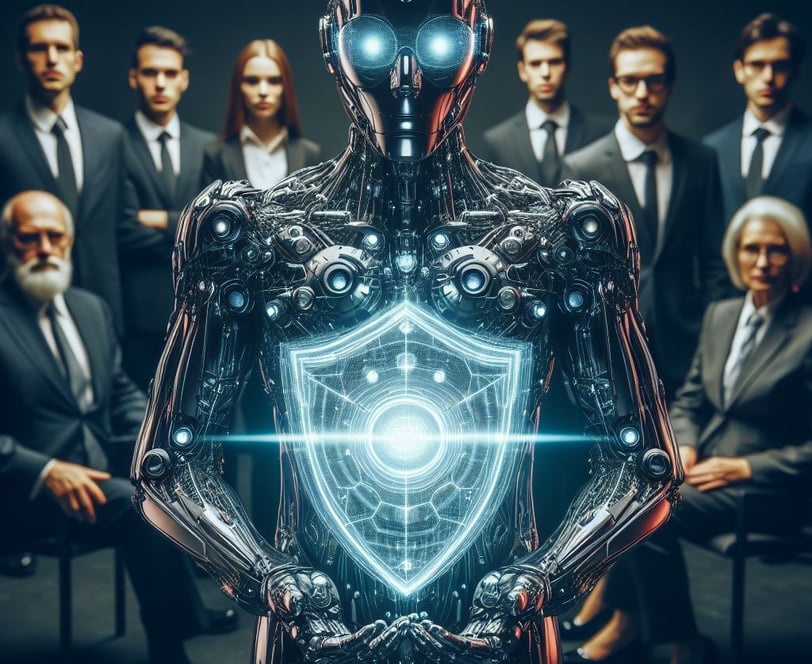AI in the Age of Fear
Balancing Protection and Social Natural Immunity
Walid Ghali
12/23/20233 min read


A Tightrope Walk Between Safety and Resilience
In an era defined by an abundance of regulations and a growing emphasis on safety, society finds itself navigating a delicate tightrope between protection and the cultivation of a crucial quality: social natural immunity. This term, coined by sociologist Frank Furedi, refers to the innate ability of individuals and communities to adapt and overcome challenges within the broader societal landscape.
As we strive to create a secure and risk-free environment, a paradox emerges. While safety nets and safeguards undoubtedly play a vital role in protecting individuals from harm, the pendulum may have swung too far, potentially hindering our ability to develop the very skills and resources needed to thrive in a dynamic and unpredictable world.
This concern extends far beyond individual well-being and into the realm of Artificial Intelligence (AI). As we design and train AI systems within the parameters of our risk-averse norms and regulations, there's a real danger that they will inherit and amplify the same anxieties that plague our current society.
The Erosion of Social Natural Immunity: From Playgrounds to Algorithms
The implications of this phenomenon are particularly evident in the domain of child development. Consider the playgrounds of our youth, once havens for scraped knees and triumphant climbs, transformed into sanitized spaces of cushioned surfaces and constant adult supervision. While the intent behind these changes is undeniably good, the unintended consequence may be the erosion of opportunities for children to experience healthy risks and build the foundational resilience they need to navigate the complexities of life.
The “snowflake effect,” a term used to describe individuals perceived as overly sensitive and unable to handle adversity, has been linked to such overprotective environments. Children raised with minimal exposure to challenges may develop heightened sensitivities and struggle to cope with the uncertainties of the real world. This creates a vicious cycle, where a well-intentioned focus on safety inadvertently fosters fragility.
The influence of this risk-averse culture extends beyond playgrounds and into the algorithms that increasingly shape our lives. AI systems, trained on data that reflects societal biases and anxieties, can perpetuate these same concerns in their decision-making. Imagine a world where:
Racial profiling is amplified through AI-powered law enforcement tools, exacerbating existing inequalities and injustices.
Healthcare algorithms, prioritizing caution over innovation, stifle progress in disease prevention and treatment, leaving vulnerable populations behind.
Loan applications or job evaluations rely on biased AI models, limiting opportunities for individuals deemed “risky” by the system, further entrenching social and economic disparities.
These are not far-fetched dystopian scenarios; they are potential consequences of unchecked societal fear and its influence on AI development.
Striking the Balance: Designing AI for Resilience and Fairness
The solution lies not in abandoning safety measures altogether, but in striking a delicate balance between protection and the cultivation of social natural immunity. This requires a paradigm shift in our approach to AI development, one that prioritizes resilience, adaptability, and fairness.
Here are some key principles to guide us on this path:
Embrace algorithms that learn from mistakes and adapt to new challenges. By incorporating robust feedback mechanisms and continuous learning algorithms, we can equip AI systems with the ability to navigate the ever-changing world and respond effectively to unforeseen circumstances.
Prioritize fairness and ethical considerations in AI development. This means establishing clear guidelines and frameworks to ensure that AI algorithms are free from bias, uphold human rights, and promote societal well-being. Diverse training data sets, rigorous testing procedures, and ongoing human oversight are crucial for achieving this goal.
Foster collaboration between AI developers, ethicists, social scientists, and policymakers. A siloed approach to AI development is fraught with risks. By bringing together diverse perspectives and expertise, we can create a more comprehensive and nuanced understanding of the challenges and opportunities associated with AI, leading to the development of systems that are not only technically advanced but also ethically sound and socially responsible.
Empower individuals and communities to build their own resilience. While AI can be a powerful tool for good, it should not be viewed as a panacea for societal challenges. Ultimately, the responsibility for building resilience lies with individuals and communities. Investing in education, promoting social cohesion, and fostering a culture of courage and adaptability are essential for creating a future where both humans and AI can thrive.
Choosing Resilience in the Age of AI
As we stand at the crossroads of technological advancement and societal anxieties, a critical choice lies before us. Will we allow fear to dictate the course of AI development, creating systems that amplify our vulnerabilities and perpetuate our anxieties? Or will we choose resilience, designing AI that empowers
